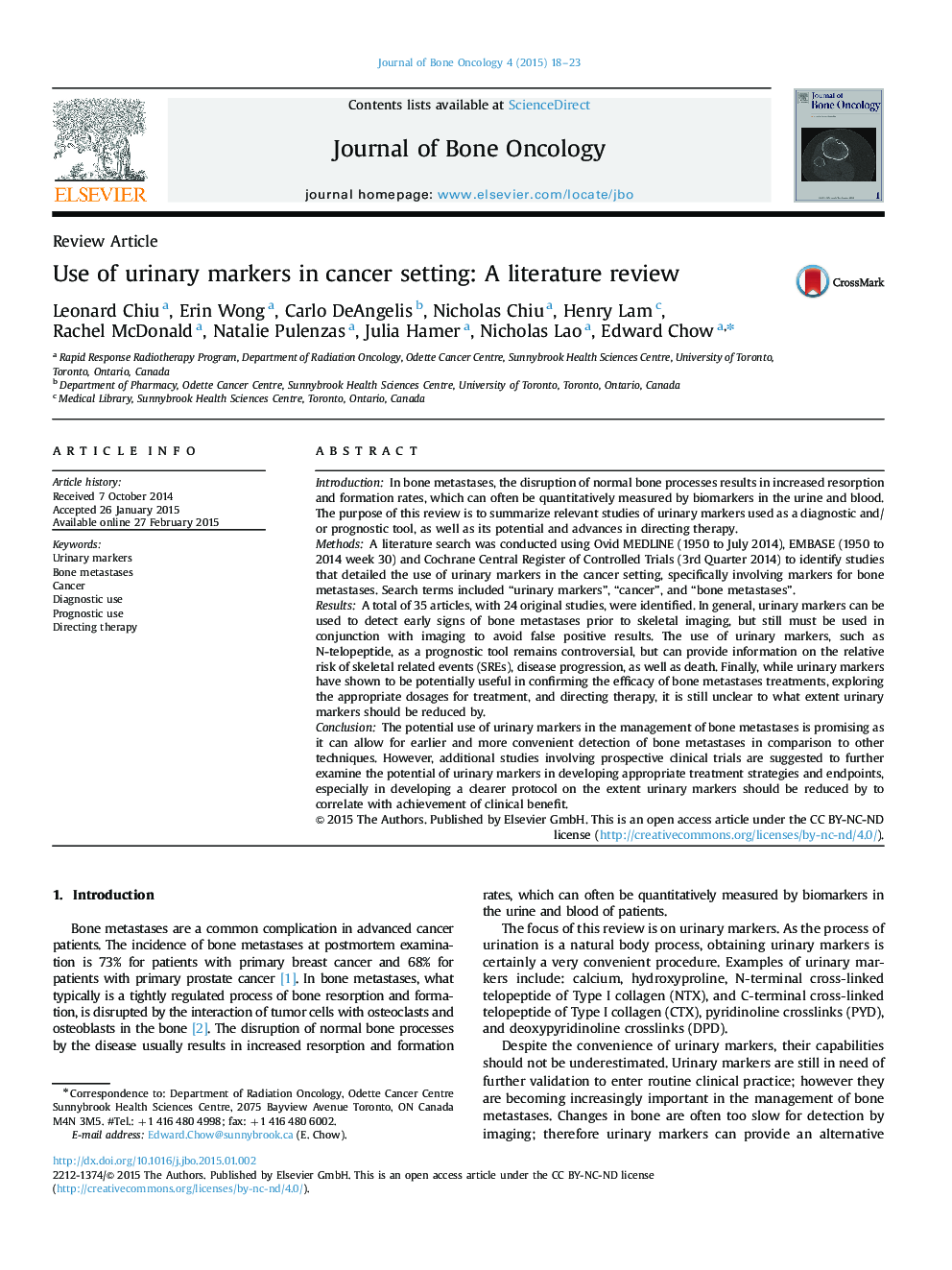| Article ID | Journal | Published Year | Pages | File Type |
|---|---|---|---|---|
| 2136111 | Journal of Bone Oncology | 2015 | 6 Pages |
IntroductionIn bone metastases, the disruption of normal bone processes results in increased resorption and formation rates, which can often be quantitatively measured by biomarkers in the urine and blood. The purpose of this review is to summarize relevant studies of urinary markers used as a diagnostic and/or prognostic tool, as well as its potential and advances in directing therapy.MethodsA literature search was conducted using Ovid MEDLINE (1950 to July 2014), EMBASE (1950 to 2014 week 30) and Cochrane Central Register of Controlled Trials (3rd Quarter 2014) to identify studies that detailed the use of urinary markers in the cancer setting, specifically involving markers for bone metastases. Search terms included “urinary markers”, “cancer”, and “bone metastases”.ResultsA total of 35 articles, with 24 original studies, were identified. In general, urinary markers can be used to detect early signs of bone metastases prior to skeletal imaging, but still must be used in conjunction with imaging to avoid false positive results. The use of urinary markers, such as N-telopeptide, as a prognostic tool remains controversial, but can provide information on the relative risk of skeletal related events (SREs), disease progression, as well as death. Finally, while urinary markers have shown to be potentially useful in confirming the efficacy of bone metastases treatments, exploring the appropriate dosages for treatment, and directing therapy, it is still unclear to what extent urinary markers should be reduced by.ConclusionThe potential use of urinary markers in the management of bone metastases is promising as it can allow for earlier and more convenient detection of bone metastases in comparison to other techniques. However, additional studies involving prospective clinical trials are suggested to further examine the potential of urinary markers in developing appropriate treatment strategies and endpoints, especially in developing a clearer protocol on the extent urinary markers should be reduced by to correlate with achievement of clinical benefit.
